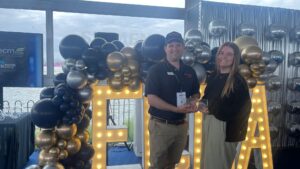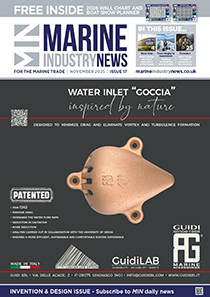Kirkella lost propulsion control in Shovette pollution accident, says new report
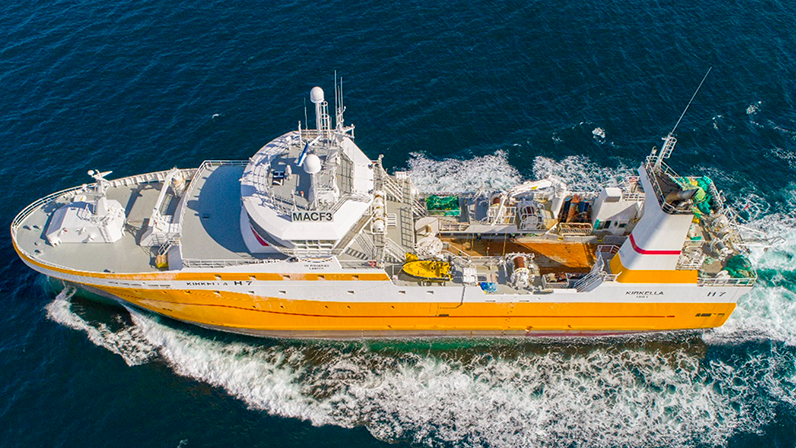
MAIB (the Marine Accident Investigation Branch) has issued its report on the collision between the fishing vessel Kirkella and harbour tug Shovette (June 2022). During the incident, the tug partially sank. About 7,000 litres of marine diesel oil were released. Kirkella was not significantly damaged and there were no injuries.
According to UK Fisheries, Kirkella is a state-of-the-art trawler, catching around 12 tonnes of fish per haul. With 30 crew onboard and automated processing, the first fish reach the on-board freezers 40 minutes after being caught.
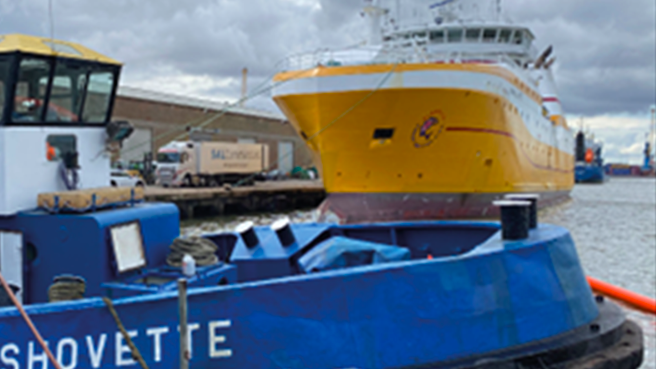
The report found that that the crew of Kirkella lost control of its propulsion system – while alongside at King George Dock, Hull. The report details how the vessel collided with the unmanned tug Shovette, which was moored ahead of Kirkella. During the collision Shovette’s hull and starboard fuel tank were breached by Kirkella’s bulbous bow.
MAIB says this occurred because, when control was transferred, the pitch levers for Kirkella’s propulsion control system were mismatched between the bridge and engine control room. Kirkella’s engineer had not checked the pitch lever when control was passed between the bridge and engine room because there was no procedure for control changeover. Plus, the classification society’s rules for remote control of engines was not aligned with the international unified requirement.
With this in mind, MAIB has made recommendations. It’s asked Det Norske Veritas to propose to the International Association of Classification Societies that Unified Requirement M43.12 is reviewed to clarify its intent.
MAIB’s also asked Kongsberg Maritime to issue a service letter to its customers advising that the Rolls-Royce Helicon-X3 system remote control changeover process can allow mismatching of levers resulting in the propelling thrust altering significantly, and advise customers of methods of operation and/or rectification should these be requested.
In the meantime, UK Fisheries has introduced a new requirement to Kirkella’s pre-arrival checklist, requiring verbal confirmation that pitch controls are set to zero before changing control between stations and requested that Kongsberg modify the control system to prevent reoccurrence.
How the incident unfolded
On 23 June 2022, Kirkella was on passage between its fishing grounds in the North Sea and Hull, England. During the passage the ship’s engineers carried out engine maintenance that required propulsion control to be transferred from the bridge to the engine control room, and the vessel to be at full speed. During the trial the pitch control lever in the engine control room (ECR) was set to full ahead. When control was passed back to the bridge, the ECR pitch control lever was left in the full ahead position.
On 24 June, Kirkella returned from its fishing grounds off northern Norway and was piloted up the Humber river to the lock at King George Dock. The master berthed the vessel and the crew sent mooring lines ashore to the port’s line handlers, who secured them to the bollards. The master positioned the vessel to make sure its cargo of frozen fish could be discharged through the vessel’s cargo door onto the quayside. By 0606, the vessel was secure with two head lines and two spring lines forward, and two stern lines and two spring lines aft. The line handlers departed shortly afterwards.
At 0611, Kirkella’s master passed control of the vessel’s propulsion system from the starboard wing control station to the centre console position. At the same time, the crew deployed the vessel’s gangway to the quayside. Once the master was content that the vessel was secured in position, control of the propulsion system was passed to the ECR so that the main engine could be shut down.
The first engineer was sitting in the ECR working at a computer and heard the propulsion command change alarm. The engineer reached across from their chair and pressed the ‘ECR’ then ‘Accept’ buttons on the touchscreen to accept control. Eighteen seconds later, Kirkella started to move ahead.
On the bridge, the alarm was raised. Two stern lines parted and the forward spring lines surged on the mooring bitts. The master went to the centre console and instructed the engineer to stop the engine. At about the same time, the master pushed the emergency stop button on the centre console, which declutched the engine. Moments before the master’s telephone call, having sensed a change in the main engine load, the first engineer had checked the engine control console and observed that the pitch was 85 per cent.
As Kirkella continued to move forward, two further mooring lines parted and the gangway was dragged until it fell from the quayside. Ten seconds after the master had declutched the engine, Kirkella collided with Shovette. Kirkella bounced off the tug and came to rest with three forward mooring lines and one aft mooring line still intact.
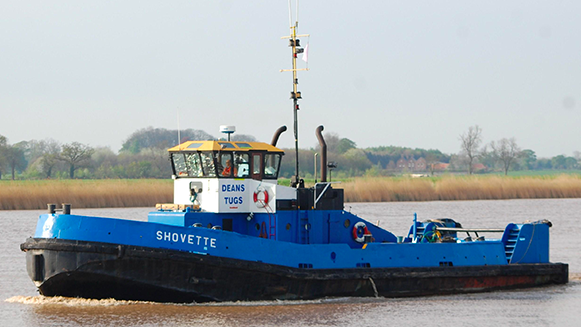
Continue reading about the work of MAIB and its recommendations into best practice.

